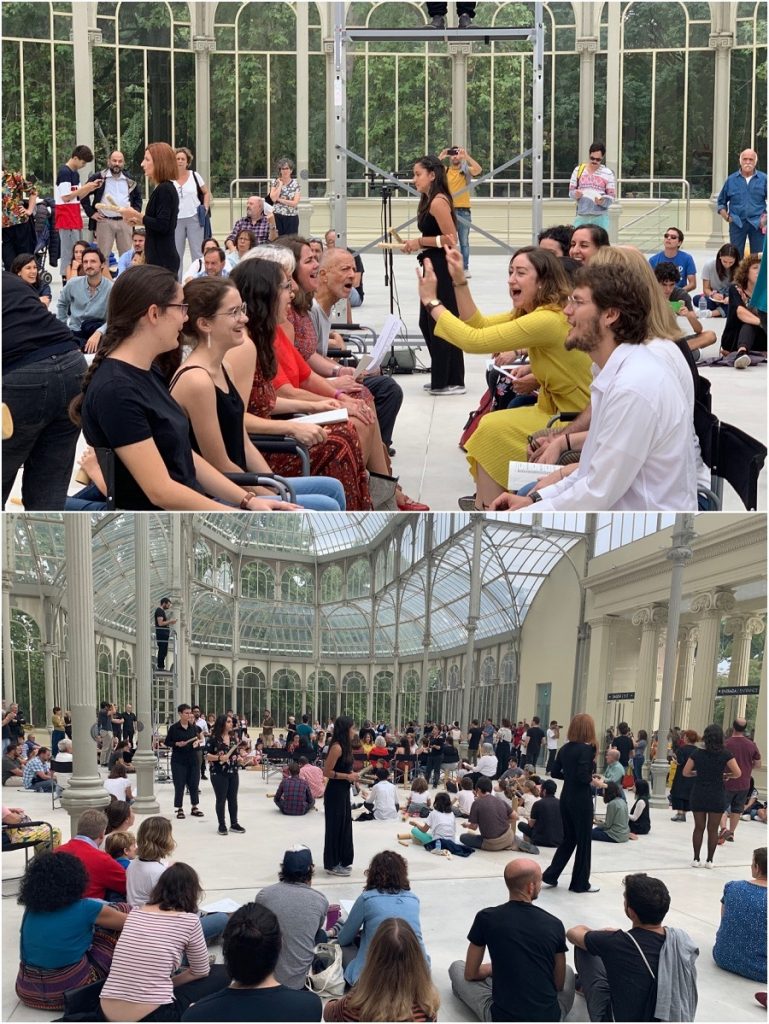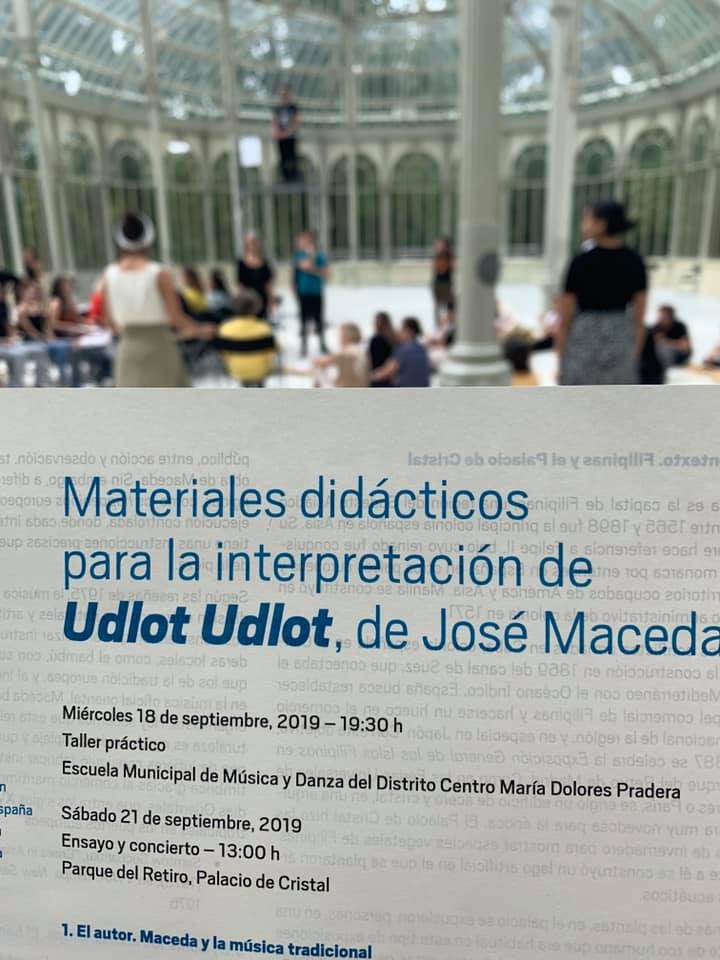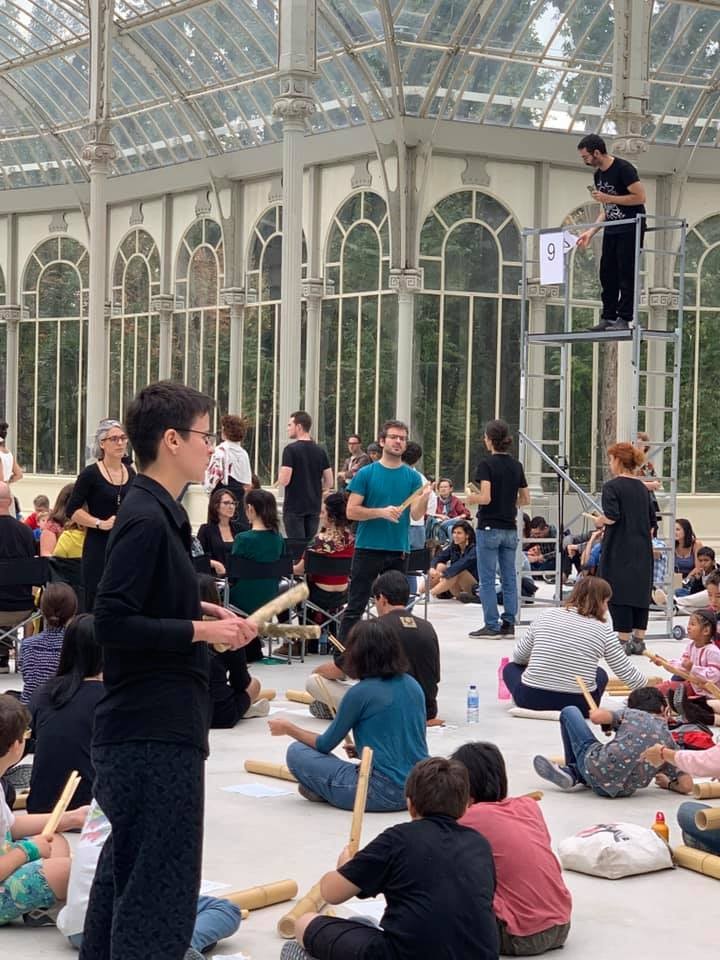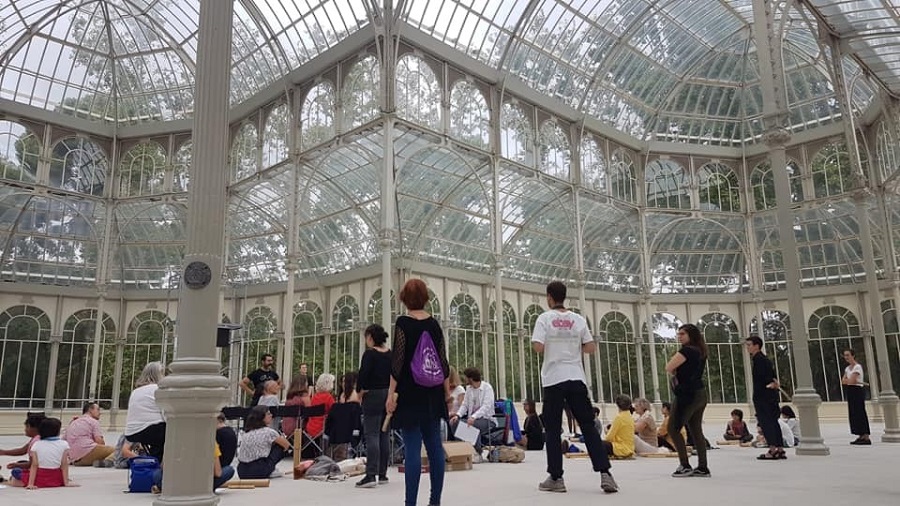
Philippine National Artist for Music Jose Maceda’s seminal piece, Udlot-Udlot, was performed by more than a hundred people at the Palacio de Cristal at Retiro Park in Madrid on 21 September 2019. The concert was spearheaded by the Reina Sofia Museum under its umbrella program Archipelago 2019, which features experimental music throughout the world. The Udlot-Udlot performance was organized in collaboration with the Philippine Embassy in Madrid, as well as with the Spanish Embassy in Manila and the UP Center for Ethnomusicology.
Udlot- Udlot, composed by Jose Maceda in 1975, is a music piece meant to be performed in an open-air venue for hundreds or thousands of performers. It was first performed by around 800 people at the University of the Philippines in that year, with other notable performances in San Francisco in 2003, and in Suita, Japan in 2010.
The performers—some of which were from different music schools in Madrid while a few had no background in music—used traditional bamboo instruments as used in the Philippines and which were especially crafted for the concert. Rhythmic sounds were created using the wooden instruments and with vocals.
According to the Reina Sofia Museum description of Udlot-Udlot, “The work is a key part not only of this composer’s career, but also the ensemble of aesthetic performances which, on an international level and not always interconnected, altered the traditional relationship between stage and sound in the 1960s and 1970s.”
Jose Maceda was an ethnomusicologist who composed numerous pieces using Southeast Asian instruments and collected audio recordings of traditional music in the region. In 2007, his collections were inscribed in the UNESCO Memory of the World Register, as submitted by UP Center for Ethnomusicology and nominated by the Philippine Government.
The UP Center for Ethnomusicology summarizes José Maceda’s career as revealing a “continuous search for answers to questions about music and beyond its boundaries. In the process of expanding his perceptual field, he discovered grey areas and gaps in orthodox musical understanding, which he sought to address in the context of wider philosophical and aesthetic domain. Taking a cue from this perspective, Maceda turned to the aesthetic and structural parameters of non-western musical practice, most specifically Southeast Asian village traditions, where he found natural answers and solutions to his quest of breaking through the frontiers that shackled conventional musical understanding.”
During the introduction of the piece, an acknowledgement was also made regarding the history of the Palacio de Cristal, a metal and glass structure built in 1887 for the Philippine Exhibition. It now serves as one of the city’s most famous landmarks.




